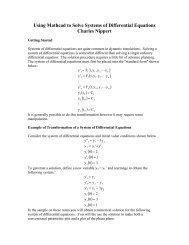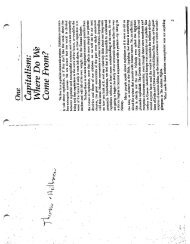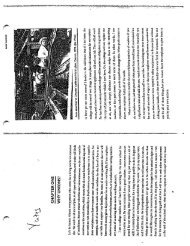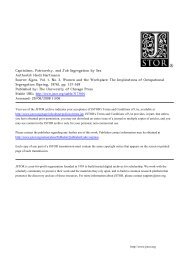Ethics - Widener University
Ethics - Widener University
Ethics - Widener University
You also want an ePaper? Increase the reach of your titles
YUMPU automatically turns print PDFs into web optimized ePapers that Google loves.
More Information on CEA 2008<br />
The clean, elegant lines of the St. Louis Gateway Arch rise high above the<br />
Mississippi River, a literal representation of the city’s most famous epithet,<br />
“Gateway to the West.” Inspired by this image, CEA pays tribute to St.<br />
Louis and to the many pioneers who passed through its threshold, risking<br />
the world they knew for nothing more (or less) than the promise of a new<br />
beginning. Our theme for the 2008 conference is Passages.<br />
We could have chosen various terms to investigate this theme--travel,<br />
sojourn, migration--but the word “passages” not only suggests the many<br />
journeys we hope to explore in literature and film, but also signals the importance<br />
of the transitional moment, when one must leap into the unknown<br />
and face/embrace the change that follows. Poets, novelists, dramatists,<br />
and directors have long been drawn to the idea of a rite of passage. Heroic<br />
quests, mythic journeys, and coming-of-age narratives abound in both classic<br />
and contemporary works: Virgil’s Aeneid, Dante’s Inferno, Woolf’s To the<br />
Lighthouse, Dickey’s Deliverance, Camus’s Black Orpheus, Hurston’s Their Eyes<br />
Were Watching God, to name but a few. Travel literature follows suit, pairing<br />
literal passages (from covered wagon to rocket ship) with characters’ inner<br />
journeys. Think Homer’s Odyssey, Cather’s The Song of the Lark, Kerouac’s On<br />
the Road, Forster’s or Whitman’s Passage to India. Even the fantastical trips of<br />
Wells’s Journey to the Center of the Earth or Le Guin’s The Left Hand of Dark<br />
ness provide another lens through which to analyze human folly, ambition,<br />
and desire. Of course, presenters need not explore a work solely devoted to<br />
this theme. Papers focused on the image itself would be welcome, for surely<br />
some new insight still waits to be discovered in the dark tunnel of the tardy<br />
white rabbit or the haunted chasm of Kubla Khan.<br />
More important, the theme suggests the way our profession analyzes and<br />
memorializes these literary and cinematic journeys. Regardless of our theoretical<br />
backgrounds, we have all been trained as close readers. We privilege<br />
the passage, often with joy. Who doesn’t know the pleasure of a “red wheel /<br />
barrow / glazed with rain”; the taste of a tea-soaked Madeleine; the philosophical<br />
ruminations of a melancholy Dane? We believe that sometimes the<br />
part is worth more than the whole, and we celebrate that part in our classroom.<br />
Join us.<br />
40 More Info on the 2008 theme



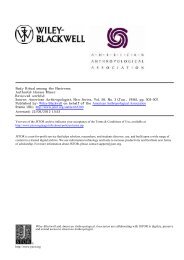
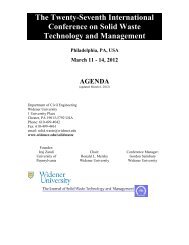
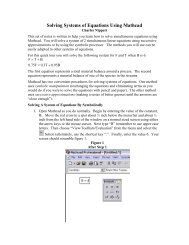
![Programming and 2-D Plots in Mathcad Charles Nippert [ ] [ ]](https://img.yumpu.com/36361996/1/190x245/programming-and-2-d-plots-in-mathcad-charles-nippert-.jpg?quality=85)
